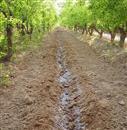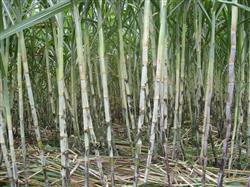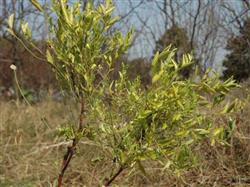Jujube management: how to increase the yield of jujube?

How to increase the yield of jujube? How to improve the quality of jujube? Please introduce the methods of planting jujube trees. If you want to improve the yield and quality of jujube trees, you can refer to the following methods for management: 1. Apply enough organic fertilizer and phosphorus and potassium fertilizer. Years of practice has proved that pure nitrogen, phosphorus pentoxide and potassium are needed for every 100 kilograms of fresh jujube. Organic fertilizer and phosphorus and potassium fertilizer should be fully applied to produce pollution-free, high-quality and high-yield jujube. Organic fertilizer was applied to a soil layer of 30cm in 20ml twice before flowering in early spring and fruit harvest in autumn, with 30kg of organic fertilizer and 1kg of compound fertilizer applied to each plant. When the jujube trees enter the full fruit stage, they only need topdressing 3 times a year, that is, budding fertilizer, flowering fertilizer and fruit fertilizer, combined with watering. 2. Spraying growth regulators and micro-fertilizers to protect flowers and fruits. Jujube trees were sprayed with the mixture of 10-15ppm gibberellin, 0.1% boric acid, 0.2% potassium dihydrogen phosphate and 0.5% urea for 3 times during full flowering and fruit expansion. 3. Opening armour at flowering stage. Nail opening can control the growth of root system and aboveground branches and leaves of jujube, so that flowers and fruits can get more nutrition and improve fruit setting rate. Nail opening method: the first nail opening shall be carried out at a height of 20m / 30cm from the ground when it blossoms at 30%. The nail-opening part moves up about 5 cm a year, and when it moves to the trunk branch, it starts to return to the nail from the lower part. After nail opening, 300 times high efficiency imidacloprid insecticide was applied to protect the nail mouth. 4. Release bees at flowering stage. Using insect pollination to improve fruit setting rate. 5. Spray water at flowering stage. The suitable air relative humidity for pollination at flowering stage is 70% Mur80%. When the humidity is less than 40%-50%, the pollen is stunted. Therefore, in the case of high temperature and drought during the flowering period, water should be sprayed at 3-5 p. M., once every 3 days, and 3 times in a row to promote pollination and flower bud germination. 6. Prevent fruit from cracking. Spraying 3000ppm calcium chloride solution or 0.1% zinc sulfate solution every semimonthly since late July can effectively reduce fruit cracking. 7. timely prevention and control of diseases and insect pests. Many kinds of fungicides such as Bordeaux liquid, green milk copper, streptomycin and so on can be used to control diseases and insect pests. Insect pests such as shell insects, heart-eating insects, red spiders and bug bugs can be sprayed once every 10 days with biological pesticides or cypermethrin pesticides with high efficiency and low toxicity. 8. Speed up fruit harvest. The ethylene solution of 200-300ppm was sprayed one week before harvest to promote fruit ripening and increase sugar content. Click to get more jujube planting techniques click to get more fruit planting techniques
- Prev

Sugarcane planting technology: how to manage the jointing stage of sugarcane?
How to manage the jointing stage of sugarcane? Please give guidance on the management method of sugarcane jointing stage, which is the critical time for the formation of sugarcane yield. After sugarcane enters the extension stage, the root system is developed, the ability of absorbing water and fertilizer is greatly improved, and the demand for light, temperature, water and fertilizer reaches the peak, such as fertilization, soil cultivation, pest control and so on.
- Next

Jujube management: what is jujube root cancer?
What is jujube root cancer? What caused it? How to prevent and cure it? Please introduce that jujube root cancer is a bacterial disease that occurs in jujube areas in the north. After root damage, the aboveground parts grew slowly, the plants were short, and when the leaves became yellow and early, the shoots became weak or even withered, but rarely caused the whole plant.
Related
- Moge, come on! The staff of the peasant association in the producing area of cantaloupe were frightened when the crowd gathered.
- Causes and Solutions of low Fruit setting rate of Apple
- Symptoms and control measures of passion fruit virus disease
- Fruit growing lesson: how do apple orchards keep high yields?
- Can you build orchards in the mountains? What are the pros and cons?
- How to manage the coloring period of Crisson grape?
- This paper introduces the processing technology of two kinds of fig products.
- How much is a month for retired teachers in rural areas by 2020?
- How can strawberry planting increase sugar content? We should pay attention to management in many aspects.
- What are the cultivation techniques on how to improve the yield of golden fruit?

